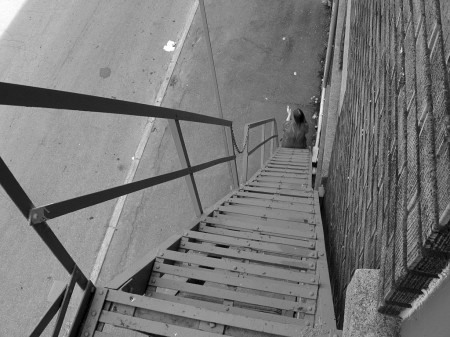Anyone who has been trawling the internet in a search for information on the suppression of air defences during the first Gulf War might be well served by this article. In particular, it goes into a lot of detail about the location, identification, targeting, and destruction of Iraqi RADAR installations using weapons like the American AGM-88 High-speed Anti-Radiation Missile (HARM) and the British ALARM (Air Launched Anti-Radiation Missile). The article highlights how the use of Soviet equipment by Iraq made this a kind of test situation for NATO versus Warsaw Pact air defence and attack equipment.
What this suggests is that the NATO-Warpac central European air battle would have probably followed a similar course, leading to the defeat of the Communists’ IADS within a week or so, in turn leading to air superiority in the following week, as the Communist air forces would have withered under the fire of the Allied counter-air campaign. Fortunately this never had to happen and the world has been spared the inevitable nuclear response to the lost air battle and hence total conventional defeat through attrition by air.
Not a very comforting conclusion for the world at large, though no doubt gratifying for all the companies that built American planes and missiles and things.
One interesting tactic was the use of Brunswick Tactical Air Launched Decoys. These simulated the appearance of incoming aircraft, causing Iraqi RADAR installations to ‘light up’ in order to target them. Sometimes, they would draw fire from surface-to-air missile batteries. Often, this would leave the former temporarily defenceless at a time when their position – and that of their supporting RADAR – had been revealed. Both could then be targeted by NATO aircraft. The ruse was apparently so effective that the Iraqi armed forces maintained the false belief that they had destroyed several hundred British and American planes.
There is also a fair bit of information about jamming and other forms of electronic countermeasures. All in all, it provides an interesting glimpse back into a period when conventional warfare against standing armies was something NATO still did.


One might want to delve further into that estimate of neutralizing Warsaw Pact weaponry within a week. There were similar claims made for the effectiveness of the Patriot anti-missile defence against Soviet-derived SCUDs during the first Iraqi war. Turned out the US Air Force and the manufacturer were interpreting their stats in a way that may be described as unseemly boosterism. I’m just sayin’.
Coyote,
That is certainly fair enough. I am sure the Soviets would have put up a more successful defence than the Iraqis, not least because there would have been so many more targets to hit.
The Patriot Missile performance during the first Gulf War provides an excellent example of why skepticism is often justified about the effectiveness of weapon systems. That point is nowhere more applicable than when thinking about ballistic missile defence.
Also:
Robert Gates posturing on missile defence
Thursday, February 21st, 2008
Marginally related: A poem of Emily’s
Oh, these boys and their bomb-and-rocket fascinations…
The key challenge in attaining supercruise is not simply a high thrust to weight ratio vis a vis the aircraft but a radical redesign of the engine because the air entering a jet engine must always travel at subsonic speeds, regardless of aircraft speed. Otherwise compressibility waves (or shock waves) will create uncontrollable vibrations among the compressor vanes. Engine inlet design therefore can effectively limit the speed of the aircraft, regardless of thrust. The SR-71 Blackbird’s distinctive nosecone is designed to funnel air around the J-58 engine for that very reason.
Dimona Radar Facility
From Wikipedia, the free encyclopedia
The Dimona Radar Facility is a facility under construction near Dimona, Israel consisting of two 400 meter (1,300 feet) tall radar towers, designed to track ballistic missiles through space and provide ground-based missiles with the targeting data needed to intercept them. Using X-band radar, it can detect missiles up to 1,500 miles away. The towers will be owned and operated by the US military, which will provide only second hand intelligence to Israel.
The towers of the facility are the tallest towers in Israel, and the tallest used for radar in the world.
‘Blue line’ flight path—the guiding of the aircraft on a path that minimizes its exposure to radar—was essential to stealth. A ‘blue line’ flight path is determined by the location and performance of hostile radars and the varying susceptibility of the aircraft to detection from different aspect angles. In other words, the aircraft threads a path between radar sites while making precisely timed turns to avoid exposing the peak side-on radar signature to the threat. The F-117 used a pre-programmed flight path, but this left it vulnerable to ’pop-up’ threats in an unexpected location.
An Estimate of the Fiscal Impact of Canada’s Proposed Acquisition of the F-35 Lightning II Joint Strike Fighter (March 2011)
Battle of 73 Easting
From Wikipedia, the free encyclopedia
The Battle of 73 Easting was a decisive tank battle fought on 26 February 1991, during the Gulf War, between American-British armored forces and those of the Iraqi Republican Guard. The battle took place several hours after the Battle of Al Busayyah. It was named for a UTM north-south coordinate line (an “Easting”, measured in kilometers and readable on GPS receivers) in the featureless desert that was used as a phase line to measure progress of the offensive. The battle was described by the Military Channel as “the last great tank battle of the 20th century.”